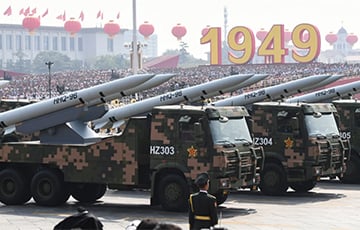Iran Bought Chinese Air Defense Systems After The Failure Of Russian S-300s
- 4,004

The weapons were paid for with oil.
Iran has purchased a shipment of surface-to-air missile (SAM) systems from China to rebuild an air defense system (ADS) significantly damaged by Israel during the 12-day war, sources tell Middle East Eye.
Arab officials familiar with the intelligence revealed that the arms transfer took place after June 24, when the warring parties signed a truce. It is not known how many and which complexes Iran received, but it is claimed that it paid China for them with oil. Another source added that U.S. Arab allies were aware of what was happening and informed Washington.
In the past, Iran used mostly Russian S-300 Favorit SAMs to defend the skies.
The recent war, however, has demonstrated their ineffectiveness. American F-35, F-16 and F-15 fighters supplied to Israel dropped guided bombs on Iranian nuclear facilities, flying up to 50 kilometers away and entering the interception zone, but the SAMs worked only at one of the bases. At the others, the military was not even aware of what was happening.
It was reported that Israel preceded the bombings with a large-scale cyberattack and was able to disable communications between air defense units, as well as cell phones, radios and pagers. As a result, the air force did not lose any of its 200 aircraft. Overall, the S-300s have a limited ability to shoot down the latest F-35 stealth fighters.
Iran purchased a batch of Russian S-300PMU-1-modified SAMs back in 2016. The Islamic Republic planned to use them specifically to protect nuclear facilities, including the Bushehr nuclear power plant built by Rosatom. According to the Russian Defense Ministry, the S-300s are capable of defeating aircraft and drones, as well as shooting down cruise and ballistic missiles. The complexes are designed to protect large industrial and administrative facilities, military bases and control centers from strikes by enemy air and space attack means. Nevertheless, back in April 2024, Israel managed to detonate the first S-300 at an airbase in Isfahan with supersonic air-to-ground missiles in response to a massive Iranian strike.
In addition, the Islamic Republic has domestically produced batteries such as the Khordad and Bavar-373 in service. In 2010, there were reports that Iran received HQ9 anti-aircraft missile systems from China.
In late June, it was also reported that Tehran decided to purchase Chengdu J-10C fighter jets from Beijing instead of Russian Su-35s. According to Military Balance, before the start of hostilities, the Iranian Air Force had about 150 fighter jets - mostly outdated American-made models that the country got before the Islamic Revolution. These include the F-4 Phantom II (64 units), F-5E/F Tiger II (35) and F-14A Tomcat (41). Also still in service are 18 MiG-29A/UBs delivered in the late 1980s and early 1990s, but most have lost combat capability due to lack of spare parts and difficulty of maintenance. After the 12-day war with Israel, the point of which was set by the U.S. joining the bombing campaign, the Islamic Republic's air force lost up to 30% of its combat aircraft, Iran's Tasnim news agency reported.











